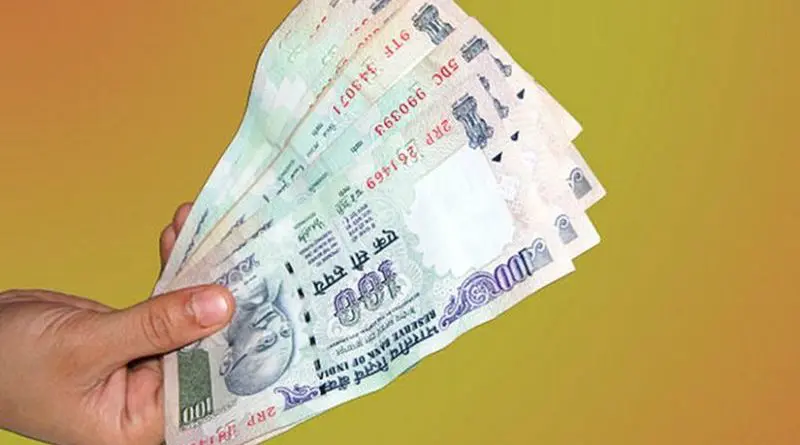Will Bankruptcy Law Drive Sick Indian Industries Into Overseas Hands? – OpEd
Several large Indian companies owe around Rs.10 lakh crores to banks and financing institutions in India due to their inability to repay the loan and the accrued interest. Such a scenario has destabilized the banks, particularly the public sector banks, to a considerable extent. The bankruptcy law, enacted by government of India recently, is supposed to help the banks to recover the debt from the loan defaulters. However, doubts persist as to whether the bankruptcy law, which empower the banks to declare the sick companies as bankrupt, will achieve it’s objectives in the present circumstances.
In the context of the bankruptcy law now in force. the bankers are now holding series of meetings to decide how to recover the debt from 12 sick companies, which owe a total of around Rs 2.5 lakh crore and constitute 25% of all bad loans in the banking system.
While the banks have backing of the bankruptcy law, the task of recovering the bad debts is by no means easy , as it is difficult to find new buyers for the sick units who can take over and run the units and clear the debts to the banks.
Obviously, the banks have to give huge concession to the buyers by way of waiver of loans and accrued interest and restructure the loan repayment schedule. In the process, the banks are bound to lose financially to a significant extent.
Where are the buyers?
Of the large loan defaulters, more than 50% are steel companies who have faced variety of problems in recent years. To revive the sick units in the steel and other sector and make them strong enough to repay the debts, several measures may be required such as change of product mix and modernization of facilities and introduction of new and updated technology, which would call for considerable investment.
Most of the sick units have enormous infra structure facilities and excellent plant and machineries that can be quickly put into optimum operations with whatever modifications and changes required, by making the needed investment.
Obviously, the buyers are needed who have large investment capability and high level of management expertise. There are not many companies in India today who can meet such needs, given the volume of the debt involved.
While reviving such sick units is a viable option, the absence of Indian buyers to take over such units has become the critical issue for the bankers.
In such scenario, the bankers have no alternative other than looking for overseas buyers who may be interested in acquiring such units, if they would be given enormous concessions in various forms.
It appears that ultimately many of such sick units would become attractive for take over by overseas organisations who would be benefited by acquiring assets at half or less than the real value, exploiting the helplessness and desperate conditions faced by the sick units and the bankers.
Rosneft-Essar Oil deal – A case study
The total debt of the Essar Group is estimated at Rs1.17 lakh crore with Essar Oil owing lenders approximately Rs30,000 crore and Essar Steel owing around Rs.44,000 crore. Essar Power has borrowings of Rs. 20,000 crore while Essar Global Fund has close to Rs. 23,500 crore.
The Joint Lenders Forum constituted by several banks who have advanced loan to Essar group have approved and authorised the acquisition of ownership of Essar Oil by Russia’s Rosneft-led consortium. The deal is considered the largest Foreign Direct Investment in India
Rosneft, Russia’s largest oil & gas company , will acquire 49 per cent of Essar Oil through its subsidiary Petrol Complex Pte. Ltd, while an other 49 per cent will be acquired by Kesani Enterprises Company Ltd (JVCo), an SPV created by commodity trading company Trafigura, Moscow-based private investment group UCP
The transaction includes Essar Oil’s 20 million tonne refinery at Vadinar in Gujarat, and its pan-India network of over 3,500 retail outlets as well as 1,010 MW Vadinar captive power plant, Vadinar deep draft port and related infrastructure.
The proceeds of the transaction will largely be utilised to clear around half of the group’s Rs. 88,000 crore debt to the banks.
The large sized company belonging to Essar Group , built over several years of hard work, is now being offered on a platter to the Russian company. Certainly, the banks in India would be grateful to the Russian company “for this help”.
Will banks in India do a road show abroad to market sick companies?
There are many more large loan defaulters such as the following, who pose grim challenge to the banks in India.
Even the large Tata group faces the grim prospects of shutting down it’s large Mundra power project having a debt of nearly Rs. 14,500 crore.
Bhushan power and steel is one of the largest defaulters among the 12 companies identified by the Reserve Bank of India. The company has outstanding loan of more than Rs 55,000 crore and is being investigated by the Serious Fraud Investigation Office (SFIO) for possible diversion of funds.
Tata Teleservices (TTSL), the telecom unit of Tata group, has approached a consortium of banks to restructure a debt of Rs.32,000 crore, which may not be acceptable to the banks in their present mood.
The banks in India are now in an unenviable position of declaring several sick companies which are loan defaulters as bankrupt and then resorting to the humiliating act of doing a road show abroad , seeking buyers for the sick companies in India. Of course, the banks in India have to accede to the terms dictated by the overseas buyers as they have no other option .
Obviously, cash rich overseas companies with bargaining power will find that such sick Indian companies are easy business opportunities for them.

